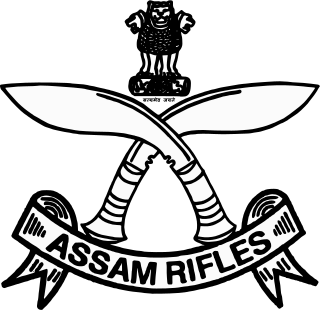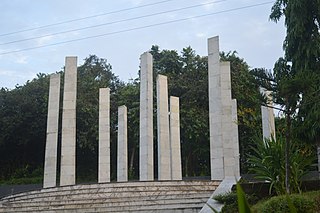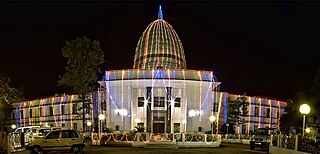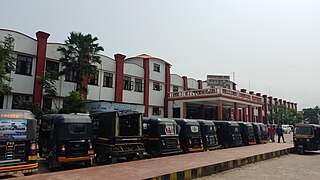
Assam is a state in northeastern India, south of the eastern Himalayas along the Brahmaputra and Barak River valleys. Assam covers an area of 78,438 km2 (30,285 sq mi). It is the second largest state in northeastern India by area and the largest in terms of population, with more than 31 million inhabitants. The state is bordered by Bhutan and Arunachal Pradesh to the north; Nagaland and Manipur to the east; Meghalaya, Tripura, Mizoram and Bangladesh to the south; and West Bengal to the west via the Siliguri Corridor, a 22-kilometre-wide (14 mi) strip of land that connects the state to the rest of India. Assamese and Bodo are two of the official languages for the entire state and Meitei (Manipuri) is recognised as an additional official language in three districts of Barak Valley and Hojai district. in Hojai district and for the Barak valley region, alongside Bengali, which is also an official language in the Barak Valley.

Northeast India, officially the North Eastern Region (NER), is the easternmost region of India representing both a geographic and political administrative division of the country. It comprises eight states—Arunachal Pradesh, Assam, Manipur, Meghalaya, Mizoram, Nagaland and Tripura, and the "brother" state of Sikkim.

The Assam Rifles (AR) is a Paramilitary force of India responsible for border security, counter-insurgency, and maintaining law and order in Northeast India and in Jammu & Kashmir in lines of Rashtriya Rifles. Its primary duty involves guarding the Indo-Myanmar border. The AR is one of the Oldest Central Para-military Forces of India administered by the Ministry of Home Affairs while operational control rests with Indian Army. As a central paramilitary force, its recruitment, perks, promotions, and retirement policies are governed by Assam Rifles Regulations. Approximately 80 percent of the officers are deputed from the Army, while the remaining are drawn from the AR cadre. The AR is commanded by the Director General of the Assam Rifles, appointed by the Ministry of Home Affairs.

The Northeast Frontier Railway is one of the 19 railway zones of the Indian Railways. It is headquartered in Maligaon, Guwahati in the state of Assam, and responsible for operation and expansion of rail network all across Northeastern states and some districts of eastern Bihar and northern West Bengal.

Cachardistrict is an administrative district in the state of Assam in India. After independence, the pre-existing undivided Cachar district was split into four districts: Dima Hasao, Hailakandi, Karimganj, and the current Cachar district. Silchar is Cachar district's center of government.

The Gauhati High Court was promulgated by governor general of India on 1 March 1948 after the Government of India Act 1935 was passed, establishing the high court with effect from 5 April 1948, for the then-province of Assam. It was originally known as the High Court of Assam and Nagaland, but renamed as Gauhati High Court in 1971 by the North-Eastern Areas (Reorganisation) Act, 1971.

The Dooars or Duars are the alluvial floodplains in eastern-northeastern India and southern Bhutan that lie south of the outer foothills of the Himalayas and north of the Brahmaputra River basin. This region is about 30 km (19 mi) wide and stretches over about 350 km (220 mi) from the Teesta River in West Bengal to the Dhansiri River in Udalguri district of Assam. The region forms the gateway to Bhutan. It is part of the Terai-Duar savanna and grasslands ecoregion.
Goalpariya is a group of Indo-Aryan dialects spoken in the Goalpara region of Assam, India. Along with Kamrupi, they form the western group of Assamese dialects. The North Bengali dialect is situated to its west, amidst a number of Tibeto-Burman speech communities. The basic characteristic of the Goalpariya is that it is a composite one into which words of different concerns and regions have been amalgamated. Deshi people speak this language and there are around 20 lakhs people.

Eastern Bengal and Assam was a province of India between 1905 and 1912. Headquartered in the city of Dacca, it covered territories in what are now Bangladesh, Northeast India and Northern West Bengal.

The North–East Frontier Agency (NEFA), originally known as the North-East Frontier Tracts (NEFT), was one of the political divisions in British India, and later the Republic of India until 20 January 1972, when it became the Union Territory of Arunachal Pradesh and some parts of Assam. Its administrative headquarters was Shillong. It received state status on 20 February 1987.
The Ministry of Development of North Eastern Region is a Government of India ministry, established in September 2001, which functions as the nodal Department of the Central Government to deal with matters related to the socio-economic development of the eight States of Northeast India: Arunachal Pradesh, Assam, Manipur, Meghalaya, Mizoram, Nagaland, Tripura and Sikkim. It acts as a facilitator between the Central Ministries/ Departments and the State Governments of the North Eastern Region in the economic development including removal of infrastructural bottlenecks, provision of basic minimum services, creating an environment for private investment and to remove impediments to lasting peace and security in the North Eastern Region.
North Eastern Coalfields is a unit of Coal India Limited, which has its headquarters in Margherita in Assam. The unit came into existence in 1975 after nationalization of coal mines in India. It took over the private mines operating in the Northeastern states of India and at present has mines operating in states of Assam, Meghalaya, Nagaland and Arunachal Pradesh. At present there are five working mines – three underground and two opencast mines.

Jim Ankan Deka is an Indian musician, documentary film maker, photographer and director of Bangalore based organisation and music school Eastern Fare Music Foundation. He is the first person from Assam to open a music institute and a production house in Bangalore, India. He won multiple awards for his song Aawaz - speak up against sexual violence based on the 2012 Delhi gang rape incident. He is the frontman of the folk-fusion band FolkAGeet.
The Barauni–Guwahati railway line connects Barauni, Saharsa, Purnia and Katihar in the Indian state of Bihar and Bongaigaon, Kamakhya and Guwahati in Assam via Siliguri, Jalpaiguri, Cooch Behar and Alipurduar in West Bengal. It is a linkage of prime importance for Northeastern India with Capital of india.

The Eastern Bengal Railway was one of the pioneering railway companies that operated from 1857 to 1942, in the Bengal and Assam provinces of British India.

The Assam Bengal Railway (ABR) was one of the pioneering railway companies in British India. Headquartered in Chittagong, it functioned from 1892 to 1942.
Surjapuri is an Indo-Aryan language of the Bengali-Assamese branch, spoken in Eastern India including North Bengal, West Bengal, and some eastern parts of Purnia division of Bihar, as well as Jhapa District in Nepal, Goalpara Division of Assam in India and Rangpur Division in Bangladesh. Among speakers in some regions, it is known as 'Deshi Bhasa'. It possesses similarities with Kamatapuri, Assamese, Bengali, and Maithili.

Apo, apong, or poka is an alcohol drink commonly found among the Tani tribes in the Northeast India states of Arunachal Pradesh and Assam. It is prepared by fermentation of rice. It is known by various names across different tribes in Arunachal Pradesh and Assam.

Badarpur Railway Station serves the Indian city of Badarpur in Assam. It belongs to Lumding railway division of Northeast Frontier Railway of India. It is located at Cachar district in the state of Assam. It is one of the oldest station of India built in 1898. The Station connects Badarpur to other regions of Barak Valley as well as many parts of India. Badarpur railway station is also the largest and most important railway station in Barak valley and south Assam region.













